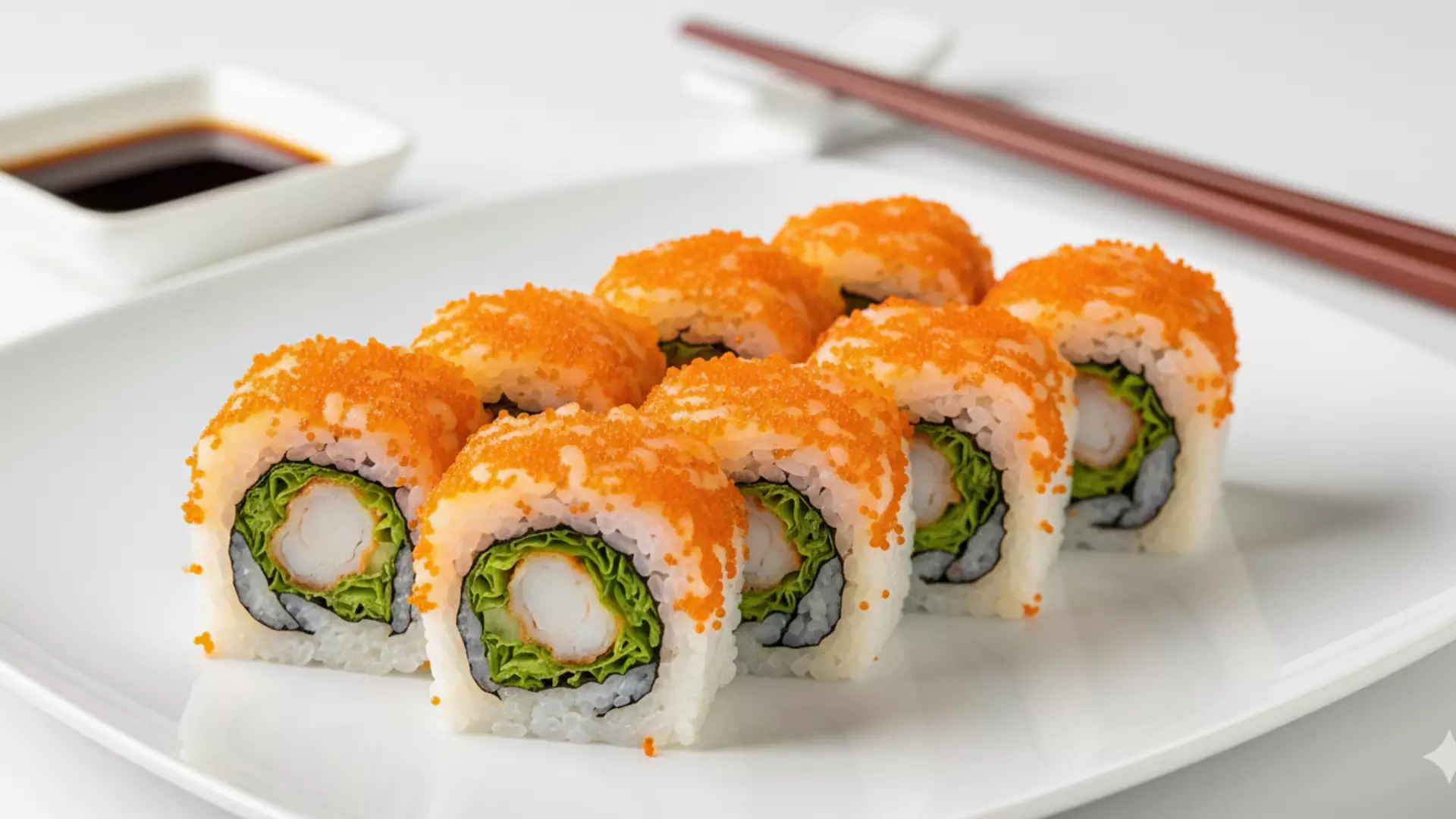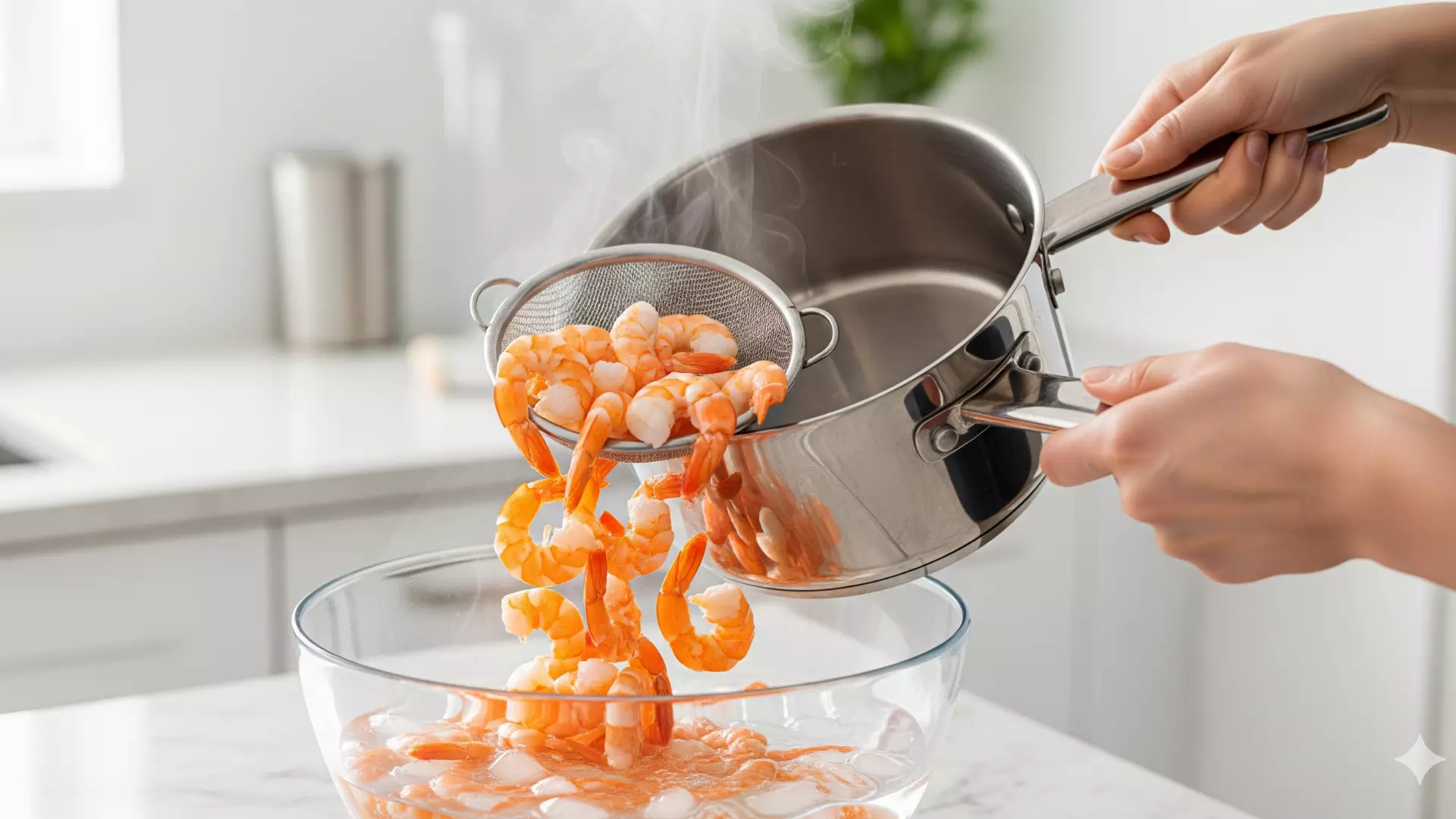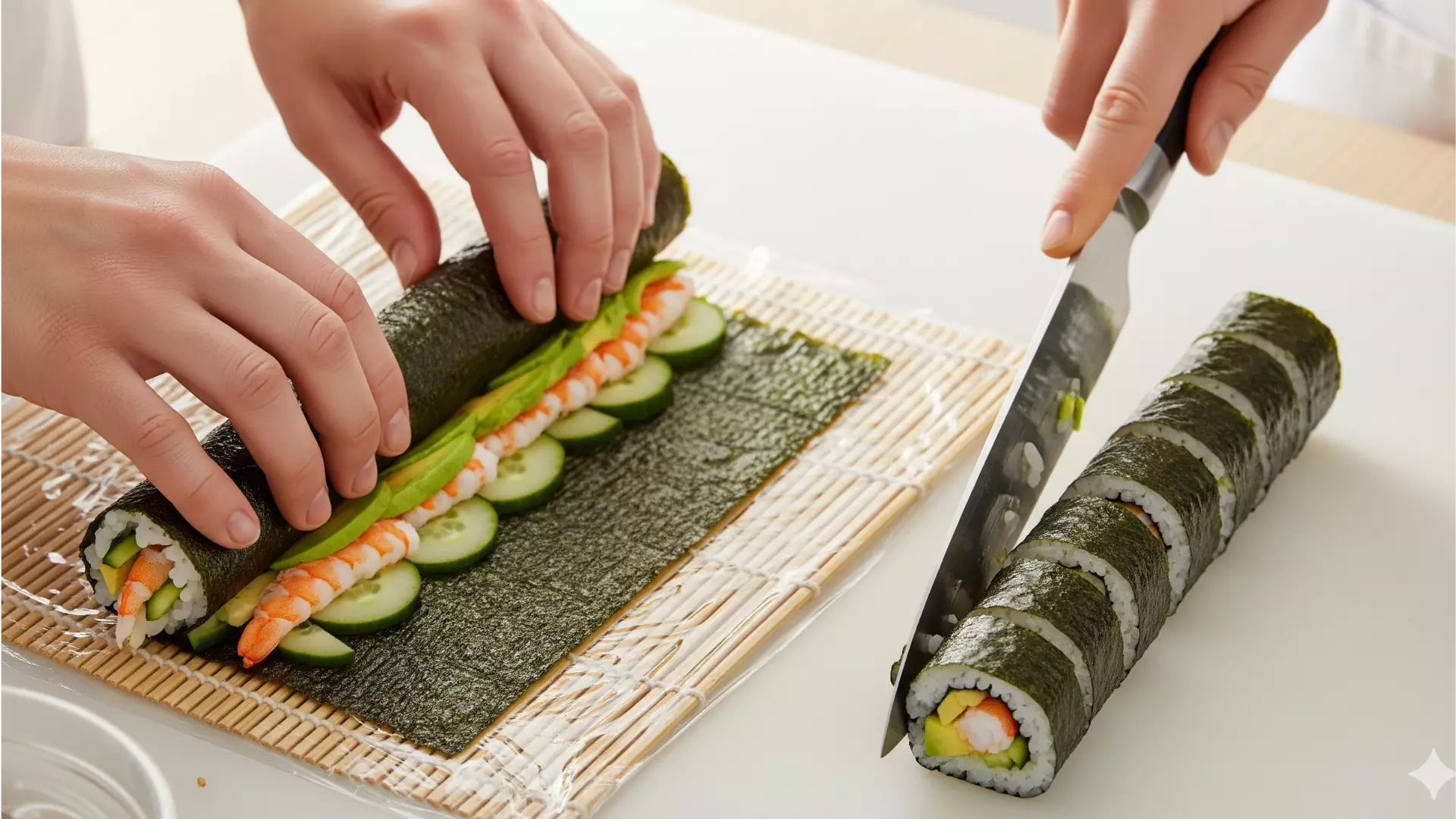Boston Roll Sushi: Ingredients, Recipe & How to Make It ?

So, you’re in the middle of the night and you’re craving for sushi, a mouth-watering and easy-to-make sushi recipe that you can enjoy with your favorite Netflix show. Plus, you’re also someone new to the sushi fam, so eating raw fish sushi feels overwhelming and a bit intimidating. Don’t hide that feeling. It’s completely alright. Here’s your solution: Boston Roll sushi is a go-to, kids-approved sushi, which means you can have it, literally. You know, kids are brutally honest 😀.
Moving on, we’re going to give you a little trailer of what you’re about to make by telling you the Boston roll recipe, the super easy-to-find ingredients, and some additional tips if your family or friends are coming over to your place for an exciting “sushi night”.
Ready to roll it up? A perfect sushi pun.
What Is A Boston Roll Sushi?
Back in the 1980s-1990s, when the culture of sushi got the boom in the West, the local chefs tried to adjust the sushi technique to the American taste and cuisine. That effort resulted in Boston Roll Sushi, aka Boston maki roll, which is designed very similarly to the one and only California Roll. These sushi rolls are basically loved because they’re beginner-friendly, best for every occasion, from late-night cravings to a family party.
The secret Boston roll ingredient that makes it stand out includes cooked shrimp instead of raw fish, creamy & rich avocado, crunchy cucumber, fresh lettuce, and tobiko to serve it. There’s another step of the recipe that makes it interesting: it’s a uramaki-style roll. This style was invented in the United States of America to hide the seaweed for American palates.
Another Filipino-American Sushi commonly used is termed as “Salmon Sushi Bake“
What’s in a Boston Roll? [Ingredients Lineup]
To make an appetizing Boston Roll Sushi that leaves the family & friends wanting more, there’s a list of must-have ingredients you can’t ignore. We have divided the Boston roll sushi ingredients by categories to make it easier for you to skim and spot the one if you’re looking to double-check any ingredient in your list.
Sushi Rice & Seasoning
Main Filling
Topping
Rolling Essentials
Garnishing Options
A Finger-Licking Boston Roll Recipe: Step-by-Step Guide
Now, we’ll walk you through the kids-approved Boston roll sushi recipe that you can make at home without any extra effort. Here we go:
Step 1: Prepare the Sushi Rice (15 minutes)
Step 2: Cook the Shrimp (10 minutes)

Step 3: Prepare the Vegetable & Dips (5 minutes)

Step 4: Assemble the Sushi Roll (2 minutes)

Step 5: Roll the Sushi (5 minutes)
Step 6: Slice and Garnish (3 minutes)
The total prep time will be around 30 minutes, while it would take approximately 20 minutes the cook. So, you can easily make it within 50 minutes if you have all the Boston roll ingredients ready to go.
Boston Roll Calories & Nutrition Information
Based on the amount of ingredients used in the recipe above, this is the estimated nutrition information and calories in a Boston roll sushi. Keep in mind, this nutrition information doesn’t sit above the professional nutritionist’s advice.
Nutrient
Amount (Whole Roll)
Per Piece (1//8)
Calories
1007 kcal
125 kcal
Carbohydrates
98g
12g
Protein
46g
6g
Total Fat
45.7g
5.7g
Saturated Fat
7g
0.9g
Polyunsaturated Fat
8g
1g
Monounsaturated Fat
19g
2.3g
Cholesterol
70mg
9mg
Sodium
1180mg
148mg
Potassium
830mg
104mg
Fiber
9g
1.1g
Sugar
8g
1g
Vitamin A
280IU
35IU
Vitamin C
9mg
1.1mg
Calcium
60mg
7.5mg
Iron
3.2mg
0.4mg
Foolproof Cooking & Storage Tips Every Sushi Beginner Needs
Don’t panic if you’re doing it for the first time and you make a mess. As a famous Japanese Chef Nobuyuki Matsuhisa (Nobu) once said, “The first time you attempt to roll sushi, there’s one thing you’ll have to quickly accept: you’re bound to make mess—but that’s not a bad thing…Mistakes are good news because how else can you learn? Even I still make mistakes.”
So, don’t panic and try to follow these simple tips that can help you do it a lot better than those who don’t follow them.
1. When you’re seasoning the sushi rice, make sure it’s a little warm so it can absorb the vinegar mixture pretty well. But before you roll them, they have to be cooled down.
2. Don’t forget to soak your sharp knife in the water before you’re about to slice the rolls.
3. Sometimes, the nori sheets feel super thin, so they’re bound to tear easily even if you do it with gentle hands. So, the trick is to use two half-sheets slightly before rolling.
4. If you add a thin streak of wasabi or spicy mayo directly on the nori before you layer the rice, it’s gonna be freakin’ delicious.
5. To enhance the crispiness of cucumber and avocado (especially), you can put them into an iced-water bowl before you fill them into the Boston sushi rolls.
6. If you’re having a party at your place or wanna save time, you can prepare and refrigerate shrimps, avocado,, cucumber (separately). And roll right before serving to get the fresh taste.
7. To soften the hardened rice the next day, you can steam the rice side in a microwave with a damp paper towel for 10 seconds. And tadaaa! You can have your equally mouth-watering Boston sushi rolls as the day before.
The Bottom Line
Making sushi rolls for yourself or your family has become a way to express your care and love for them and yourself. And especially, if you’re someone who hasn’t made it before, it’s a great chance to learn it and serve restaurant-quality Boston Rolls sushi for your family and make memories with them. Of course, it would take practice to perfect your sushi rolls, but all the time and effort is absolutely worth it! Now, you have the recipe, ingredients, and tips, and you’re set to acquire a new skill. How amazing is that! Once you have made it a few times, you can add your creativity and bring new flavours to this recipe.
